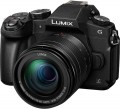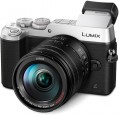DxOMark rating
The result shown by the camera in the DxOMark ranking.
DxOMark is one of the most popular and respected resources for expert camera testing. According to the test results, the camera receives a certain number of points; The more points, the higher the final score.
Sensor
— CCD (CCD). Abbreviation for Charge-Coupled Device. In such sensors, information is read from the photosensitive element according to the “line at a time” principle — an electronic signal is output to the image processor in the form of separate lines (there is also a “frame at a time” variant). In general, such matrices have good characteristics, but they are more expensive than CMOS. In addition, they are poorly suited for some specific conditions — for example, shooting with point light sources in the frame — which is why you have to use various additional technologies in the camera, which also affect the cost.
— CMOS (CMOS). The main advantages of CMOS matrices are ease of manufacture, low cost and power consumption, more compact dimensions than those of CCDs, and the ability to transfer a number of functions (focus, exposure metering, etc.) directly to the sensor, thus reducing the dimensions of the camera. In addition, the camera processor can read the entire image from such a matrix at once (rather than line by line, as in CCD); this avoids distortion when shooting fast-moving objects. The main disadvantage of CMOS is the increased possibility of noise, especially at high ISO values.
— CMOS (CMOS) BSI. BSI is an abbreviation for the English phrase "Backside Illumination". This is the name of "inverted" CMOS sensors, the light on which does not penetrate from the side of the photodiodes, but from the back of the matrix (from the side of the subst
...rate). With this implementation, the photodiodes receive more light, since it is not blocked by other elements of the image sensor. As a result, back-illuminated sensors boast high light sensitivity, which allows you to create images of better quality with less noise when shooting in low light conditions. BSI CMOS sensors require less light to properly expose a photo. In production, back-illuminated sensors are more expensive than traditional CMOS sensors.
— LiveMOS. A variety of matrices made using the technology of metal oxide semiconductors (MOS, MOS — Metal-Oxide Semiconductor). Compared to CMOS sensors, it has a simplified design, which provides less tendency to overheat and, as a result, a lower noise level. It is well suited for the "live" viewing mode (viewing in real time) of the image from the matrix on the screen or in the camera's viewfinder, which is why it received the word "Live" in the title. They also feature high data transfer rates.Total MP
The total number of individual light sensitive dots (pixels) provided in the camera's sensor. Denoted in megapixels - millions of pixels.
The total number of MPs, as a rule, is greater than the number of megapixels from which the frame is directly built (for more details, see "Effective number of MPs"). This is due to the presence of service areas on the matrix. In general, this parameter is more of a reference than practically significant: a larger total number of MPs with the same size and effective resolution means a slightly smaller size of each pixel, and, accordingly, an increased likelihood of noise (especially at high ISO values).
Effective MP number
The number of pixels (megapixels) of the matrix directly involved in the construction of the image, in fact — the number of points from which the captured image is built. Some manufacturers, in addition to this parameter, also indicate the total number of MPs, taking into account the service areas of the matrix. However, it is the effective number of MPs that is considered the main indicator — it is this that directly affects the maximum resolution of the resulting image (see “Maximum image size”).
A megapixel is 1 million pixels. Numerous megapixels ensures high resolution of the captured photos, but is not a guarantee of high-quality images — much also depends on the size of the sensor, its light sensitivity (see the relevant glossary items), as well as hardware and software image processing tools used in the camera. Note that for small matrices, high resolution can sometimes be more of an evil than a blessing — such sensors are very prone to the appearance of noise in the image.
Maximum image size
The maximum size of photos taken by the camera in normal (non-panoramic) mode. In fact, this paragraph indicates the highest resolution of photography — in pixels vertically and horizontally, for example, 3000x4000. This indicator directly depends on the resolution of the matrix: the number of dots in the image cannot exceed the effective number of megapixels (see above). For example, for the same 3000x4000, the matrix must have an effective resolution of at least 3000*4000 = 12 million dots, that is, 12 MP.
Theoretically, the larger the size of the photo, the more detailed the image, the more small details can be conveyed on it. At the same time, the overall image quality (including the visibility of fine details) depends not only on resolution, but also on a number of other technical and software factors; see "Effective MP number" for more details.
Light sensitivity (ISO)
The sensitivity range of a digital camera matrix. In digital photography, light sensitivity is expressed in the same ISO units as in film photography; however, unlike film, the light sensitivity of the sensor in a digital camera can be changed, which gives you more options for adjusting shooting parameters. High maximum light sensitivity is important if you have to use a lens with a low aperture (see Aperture), as well as when shooting dimly lit scenes and fast-moving objects; in the latter case, high ISO allows you to use low shutter speeds, which minimizes image blur. However, note that with an increase in the value of the applied ISO, the level of noise in the resulting images also increases.
Sensor cleaning
The presence in the camera of a special mechanism for
cleaning the matrix from dust and other contaminants.
This function is found only in models with interchangeable lenses — "reflex cameras" and MILC (see "Camera type"). When replacing the lens in such cameras, the sensor turns out to be open, and the probability of its contamination is quite high; and extraneous particles on the matrix, at best, lead to the appearance of extraneous artifacts, at worst, to damage to the sensor. To avoid this, cleaning systems are provided. They usually work on the principle of ultrasound: high-frequency vibration "resets" debris from the surface of the sensor.
Note that no cleaning system is perfect — in particular, such systems are “too tough” for condensate, salt deposits and other similar contaminants. So the matrix may still need manual cleaning (ideally, in a service centre). Nevertheless, this function allows you to effectively deal with at least dust, which greatly simplifies the life of the user.
No AA filter
No AA filter in camera design.
The AA filter is responsible for "anti-aliasing" — the elimination of the moiré effect. This effect can occur when shooting objects with a lot of thin horizontal or near-horizontal lines (for example, a brick wall at a great distance, or a suit made of a certain type of fabric). It leads to the appearance of a characteristic pattern in the picture, which, usually, is inappropriate; to eliminate this phenomenon, an AA filter is provided. At the same time, this feature is said to reduce the overall sharpness of the image; therefore, it may not be available in some cameras. These are mainly professional models: the absence of an AA filter gives the photographer additional features, but puts forward increased requirements for shooting skills.
Focal length
Focal length of the camera lens.
Focal length is such a distance between the camera matrix and the optical center of the lens, focused at infinity, at which a clear and sharp image is obtained on the matrix. For models with interchangeable lenses (
mirrorless cameras and MILC, see “Camera Type”), this parameter is indicated if the camera is supplied with a lens (“kit”); Let us recall that, if desired, optics with other characteristics can be installed on such a camera.
The longer the focal length, the smaller the viewing angle of the lens, the higher the degree of approximation and the larger the objects visible in the frame. Therefore, this parameter is one of the key for any lens and largely determines its application (specific examples are given below).
Most often in modern digital cameras, lenses with a variable focal length are used: such lenses are able to zoom in and out of the image (for more details, see "Optical Zoom"). For "DSLRs" and MILC, specialized optics with a constant focal length (fixed lenses) are produced. But in digital compacts, "fixes" are used extremely rarely, usually such a lens is a sign of a high-end model with specific characteristics.
It should be borne in mind that the actual focal length of the lens is usually given in the characteristics of the camera. And the viewing angles and the general purpose of the optics are determined not only by this parameter, but also
...by the size of the matrix with which the optics are used. The dependence looks like this: at the same viewing angles, a lens for a larger matrix will have a longer focal length than a lens for a small sensor. Accordingly, only cameras with the same sensor size can be directly compared with each other in terms of lens focal length. However, to facilitate comparisons in the characteristics, the so-called. EGF - focal length in 35 mm equivalent: this is the focal length that a lens for a full frame matrix having the same viewing angles would have. You can compare by EGF lenses for any matrix size. There are formulas that allow you to independently calculate the equivalent of 35 mm, they can be found in special sources.
If we talk about a specific specialization, then the EGF up to 18 mm corresponds to ultra-wide-angle fisheye lenses. Wide-angle is considered "fixed" optics with EGF up to 28 mm, as well as vario lenses with a minimum EGF up to 35 mm. Values up to 60mm correspond to "general purpose" optics, 50 - 135mm are considered optimal for shooting portraits, and higher focal lengths are found in telephoto lenses. More detailed information about the specifics of various focal lengths can be found in special sources.
